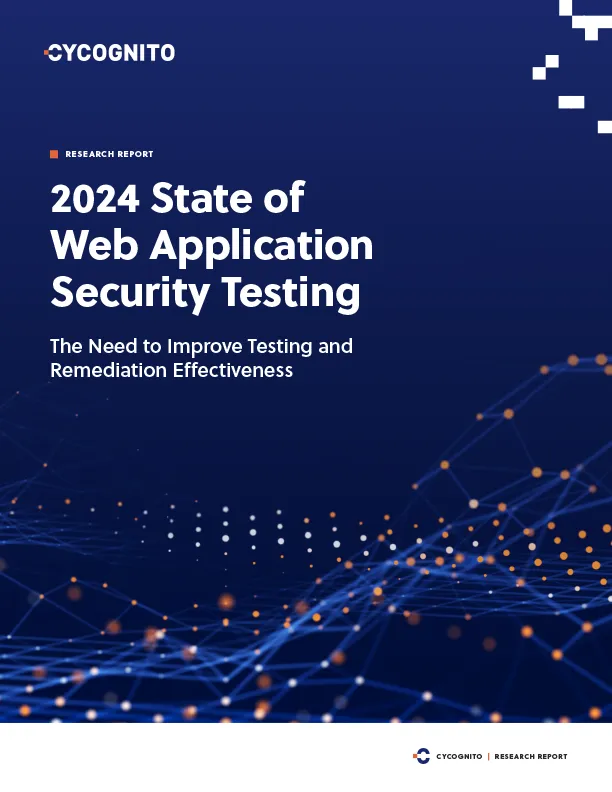What Are SAST and DAST?
Static application security. testing (SAST) and dynamic application security testing (DAST) are two important components of software security testing.
SAST is a white-box testing method that analyzes the source code or binaries without executing the application. It identifies vulnerabilities such as SQL injection, cross-site scripting, and buffer overflows early in the development cycle. SAST helps developers rectify vulnerabilities before the application runs in a live environment, reducing the risk of exploitation.
DAST is a black-box testing method used on applications while they are running. It simulates attacks on a working application, identifying vulnerabilities from an external perspective. Unlike SAST, DAST does not require source code access, making it useful for testing the security of the deployed application. DAST provides a clear view of how an application reacts to actual attack scenarios during runtime.
How SAST Works
Static application security testing (SAST) scans an application’s source code, bytecode, or binary files before runtime to detect security vulnerabilities. The SAST tool parses the code to create a model of data flow, control flow, and dependencies, enabling it to pinpoint weaknesses that could lead to exploits.
The process begins by integrating the SAST tool into the developer’s IDE or CI/CD pipeline, allowing code scans to be automated at every stage of development. As the tool scans, it checks the code against a database of known vulnerabilities and security rules, flagging issues like insecure input handling, outdated cryptographic practices, and hardcoded secrets.
Results from SAST scans are typically provided in detailed reports, identifying the location of vulnerabilities in the code along with severity levels. This allows developers to address issues early, minimizing the risk of introducing vulnerabilities into production. Because SAST works on non-executing code, it is ideal for finding logical flaws and coding errors.
How DAST Works
Dynamic application security testing (DAST) evaluates an application during runtime, mimicking the actions of an attacker to discover potential vulnerabilities. DAST tools are deployed on a running application—usually in a staging or testing environment—to analyze its responses to simulated attacks.
The DAST tool begins by mapping the application, identifying all accessible endpoints and entry points for data input. It then launches a series of test attacks, such as injecting malicious input or attempting to bypass authentication, to see how the application responds. By observing actual application behavior, DAST identifies vulnerabilities like improper input validation, authentication weaknesses, and misconfigurations.
Results from DAST scans provide insight into how an application performs under real-world attack scenarios, helping to uncover runtime vulnerabilities that static analysis might miss. Since DAST does not need source code, it’s often employed as a final security check when applications are deployed to a staging environment or when they are already running in production.
How Are SAST and DAST Related toSCA?
Software composition analysis (SCA) focuses on identifying vulnerabilities in third-party components, such as open-source libraries and dependencies, within an application. While SAST and DAST are concerned with the application’s custom code and runtime behavior, respectively, SCA ensures the safety of external components that form the foundation of many modern applications.
SAST, DAST, and SCA are complementary tools in a comprehensive application security strategy. SAST and SCA are typically used early in development to address vulnerabilities before deployment, while DAST comes into play later to simulate real-world attacks on a live application. For example, SCA might flag a vulnerable library dependency, SAST would detect insecure code written by developers, and DAST would reveal a security misconfiguration observable only in the runtime environment.
Tips from the Expert

Rob Gurzeev, CEO and Co-Founder of CyCognito, has led the development of offensive security solutions for both the private sector and intelligence agencies.
In my experience, here are tips that can help you better evaluate and utilize SAST and DAST effectively:
- Prioritize context-driven SAST rules: Customize your SAST tools with organization-specific rulesets tailored to your coding practices and threat models. This reduces false positives and focuses on the most critical vulnerabilities for your environment.
- Simulate edge-case attack scenarios in DAST: Standard DAST configurations may miss edge cases. Manually define advanced attack scenarios, such as payloads that exploit rare input combinations or uncommon APIs, to identify hard-to-spot runtime vulnerabilities.
- Use threat modeling to complement both tools: Incorporate a threat modeling process early in development to identify high-risk areas of your application. Direct SAST and DAST efforts to these components to maximize coverage and efficiency.
- Monitor third-party integrations dynamically: While SCA tools analyze open-source components, DAST can evaluate third-party APIs or integrations for runtime vulnerabilities, such as insecure session handling or unexpected error disclosures.
- Incorporate feedback loops between SAST and DAST teams: Establish communication protocols between teams managing SAST and DAST. Insights from DAST can inform SAST rules, and vice versa, creating a continuous improvement loop for vulnerability detection.

2024 State of Web Application Security Testing
Are you confident your web application security measures are keeping pace with evolving threats?
Discover how your web app security compares. Learn about average testing frequency, the prevalence of web application security incidents and breaches, and the increasing adoption of automation to improve testing efficiency.

DAST vs. SAST: The Key Differences
SAST and DAST serve different purposes within the software development lifecycle. Here are the key differences:
1. Testing Approach
SAST, a white-box testing method, analyzes the application’s source code, bytecode, or binaries without executing the program. This allows SAST to scrutinize every line of code, making it highly effective for identifying security flaws that could be introduced through poor coding practices. SAST tools integrate into the development pipeline, providing developers with detailed feedback on code weaknesses as they work.
DAST, as a black-box testing method, evaluates the application from an external perspective while it is running. It simulates attack patterns to assess the security of a deployed application’s functionality, interfaces, and responses to malicious input. DAST’s dynamic approach makes it ideal for testing runtime vulnerabilities and ensuring that security defenses behave as expected under real-world conditions. Together, SAST and DAST provide a complete view of an application’s security, covering both code-level weaknesses and runtime vulnerabilities.
2. Visibility and Scope
SAST provides a complete view of the application’s codebase, allowing thorough analysis of all components. Its in-depth inspection identifies potential flaws at the code level. However, it cannot ascertain the security of runtime processes or interactions with external components.
DAST, by contrast, has a limited view of the internals but excels at evaluating interface and runtime security. It tests the application’s defensive mechanisms as an attacker would, providing insights into how the application is perceived externally. Its approach helps identify misconfigurations and vulnerabilities exposed only during operation, offering a focused view on runtime and post-deployment security aspects.
3. Relevancy to SDLC Stages
SAST and DAST operate at different stages of the software development lifecycle (SDLC), making them suitable for distinct phases of security testing.
SAST is typically employed during the early stages of development, such as coding and build phases. By analyzing the source code before the application is executed, SAST enables developers to identify and fix vulnerabilities early, reducing the cost and effort associated with late-stage defect remediation. It integrates well into CI/CD pipelines, providing continuous feedback on code security as part of the development workflow.
DAST is applied later in the SDLC, usually during the testing or staging phases, and can extend into production monitoring. Because it evaluates applications in their running state, DAST is best suited for testing fully or partially functional applications. This approach ensures that runtime vulnerabilities, configuration errors, and operational flaws are identified before the application is deployed or while it is in use.
4. Types of Vulnerabilities Detected
SAST is effective at detecting vulnerabilities like authentication flaws, code injection vulnerabilities, buffer overflows, and other issues identifiable without running the application. It checks for conditions that could lead to security weaknesses by examining the code, providing extensive lists of potential vulnerabilities that developers can fix early on.
DAST identifies weaknesses appearing during application execution, such as input validation issues, session handling problems, and misconfigurations seen only in dynamic contexts. It’s capable of finding flaws like broken authentication and cross-site scripting, providing insights into vulnerabilities that affect the application as users interact with it, offering a complementary layer of security verification.
5. False Positives
SAST often generates more false positives due to its exhaustive analysis of code, where non-issues might be flagged as vulnerabilities. This can lead to the need for extensive review processes to differentiate actual security threats from benign code anomalies.
DAST may report fewer false positives, because it can validate the existence of vulnerabilities ina live environment. However, it can still misidentify benign application behaviors as vulnerabilities. This happens because DAST observes only the application output and interactions.
In both solutions, effective filtering and analysis are required to ensure accurate security assessments without unnecessary remediation efforts. Advanced solutions use AI to perform more nuanced analysis of vulnerabilities and reduce false positives.
Pros and Cons of SAST
Advantages:
- Early detection of vulnerabilities: SAST tools allow developers to identify security flaws early in the development lifecycle, reducing the cost and complexity of fixing issues before they reach production.
- Comprehensive code analysis: By examining the full codebase, SAST provides a deep analysis, identifying potential weaknesses in logic, data flow, and code structure.
- Developer-friendly integration: SAST tools can be integrated into IDEs and CI/CD pipelines, enabling automated security checks with every code change. This continuous feedback helps developers address issues quickly, fostering secure coding practices.
Limitations:
- High rate of false positives: Due to its exhaustive nature, SAST often flags benign issues as vulnerabilities, leading to “noise” in the results. Developers may need to spend extra time reviewing and validating each finding.
- Limited runtime context: SAST cannot evaluate issues that only emerge when the application is running, such as those arising from system configurations, external integrations, or dynamic interactions.
- Inability to simulate real-world attacks: Because it works on static code, SAST does not provide insights into how the application behaves under actual attack scenarios, leaving runtime vulnerabilities undetected.
Pros and Cons of DAST
Advantages:
- Realistic attack simulation: DAST tests the application in its live, running state, providing a realistic view of its security posture by simulating common attack scenarios. This approach helps uncover vulnerabilities that only appear at runtime.
- No source code access required: DAST does not require access to the application’s source code, making it suitable for testing third-party applications or systems with restricted code access.
- Focus on runtime security: By examining how the application responds to various inputs and interactions, DAST can detect vulnerabilities related to session management, authentication, and input validation, which are difficult to detect with static analysis.
Limitations:
- Limited coverage of codebase: Since DAST operates without visibility into the internal code structure, it may miss security flaws that are only detectable in the code itself, such as insecure coding patterns or unvalidated functions.
- Late in development lifecycle: DAST is generally performed later in the development process, meaning that identified vulnerabilities may require more time and resources to fix as compared to issues caught in earlier stages.
- Potential for false negatives: Some vulnerabilities may go undetected in DAST testing if specific attack scenarios are not part of the test or if the application hides vulnerabilities well during dynamic tests.
Combining SAST and DAST for ComprehensiveSecurity
To achieve thorough application security, organizations often combine SAST and DAST. By integrating both types of testing, teams can address vulnerabilities at all stages of the software development lifecycle, covering both code-level issues and runtime security gaps.
Using SAST early in development allows teams to detect and resolve vulnerabilities before deployment. Since SAST scans code for logical flaws and poor coding practices, it helps establish a secure codebase from the start. With continuous integration in development environments, SAST enables frequent checks, allowing developers to catch and fix issues as they code.
DAST, performed later in the lifecycle, offers a critical layer of validation. By running tests on the live application, DAST detects vulnerabilities that only appear during execution, such as issues in authentication, session management, or data handling. This external perspective simulates actual attack conditions, providing insights into how the application withstands real-world threats.
Automated Penetration Testing withCyCognito
CyCognito built its external attack surface management (EASM) and security testing platform to replicate an attacker’s thought processes and workflows.
CyCognito automates the first phase of offensive cyber operation with deep reconnaissance and active security testing. Pen testing and red teaming staff are able to immediately focus on meaningful activities that require human decision.
With CyCognito, your teams have access to:
- Continuously updated reconnaissance information – Dynamic updates to your full asset inventory across all business divisions and brands – seed information and manual updates are not required.
- Automatic black box penetration test results – Over 30,000 penetration testing modules applied to full inventory of exposed network infrastructure and web applications.
- Integrated threat intelligence and remediation planning services – Guidance on which assets to test first, with evidence.
- Workflows built for collaboration – Create subteams dedicated to specific pen testing and red team staff. Organizations and assets can be assigned per team based on predefined scopes. Instant access to what to test next.
With CyCognito your offensive security teams can pivot faster to human-led exploitation-based tests:
- Reduce time consuming and tedious reconnaissance work
- Reach your ideal security testing goals
- Reduce burnout and get better results
- Get more ROI out of bug bounty programs
- Learn more about CyCognito for automated security testing

2024 State of Web Application Security Testing
Are you confident your web application security measures are keeping pace with evolving threats?
Discover how your web app security compares. Learn about average testing frequency, the prevalence of web application security incidents and breaches, and the increasing adoption of automation to improve testing efficiency.














